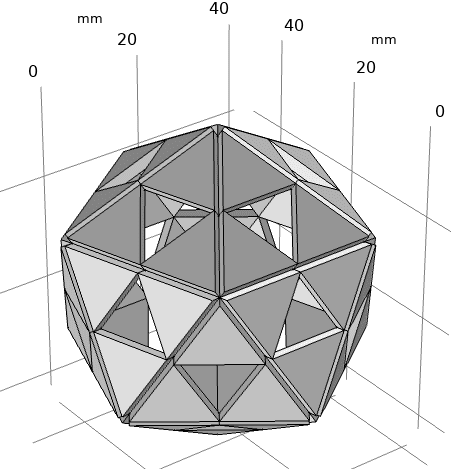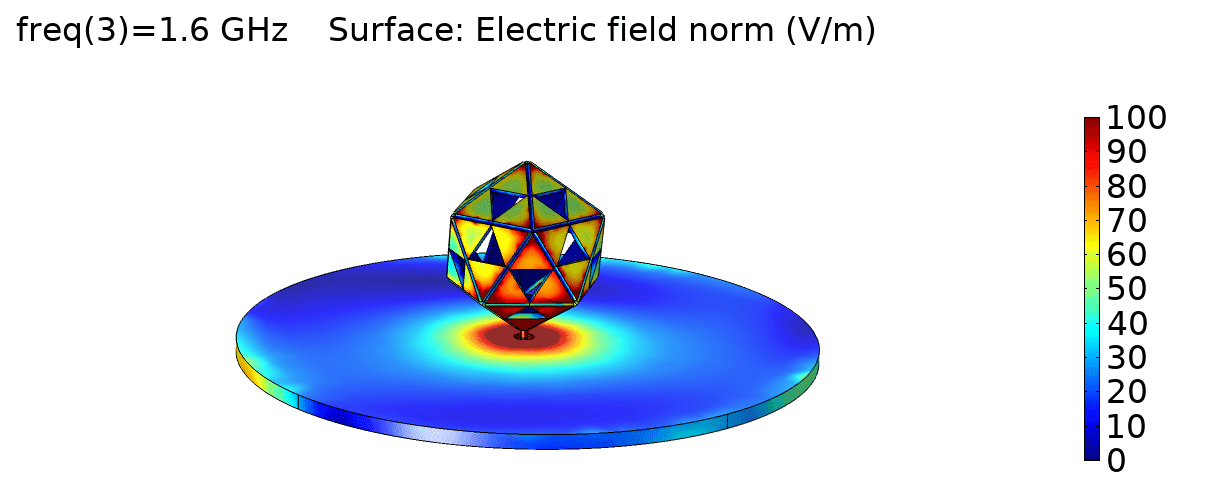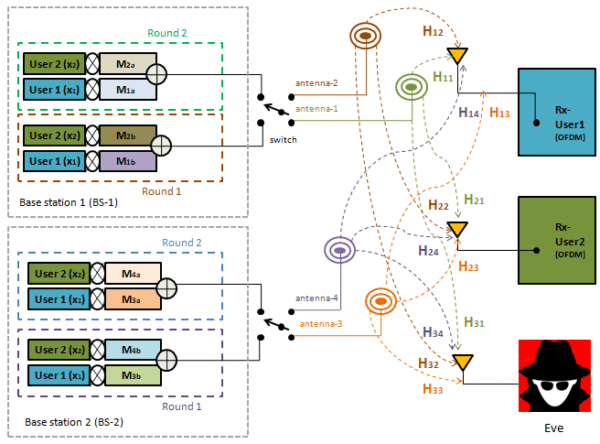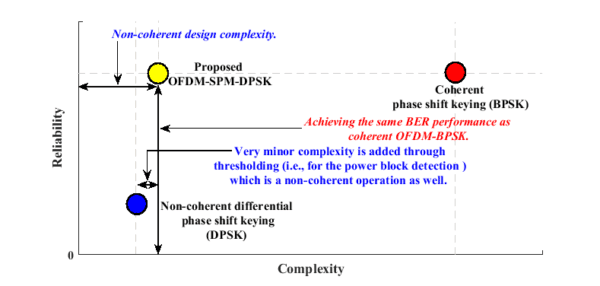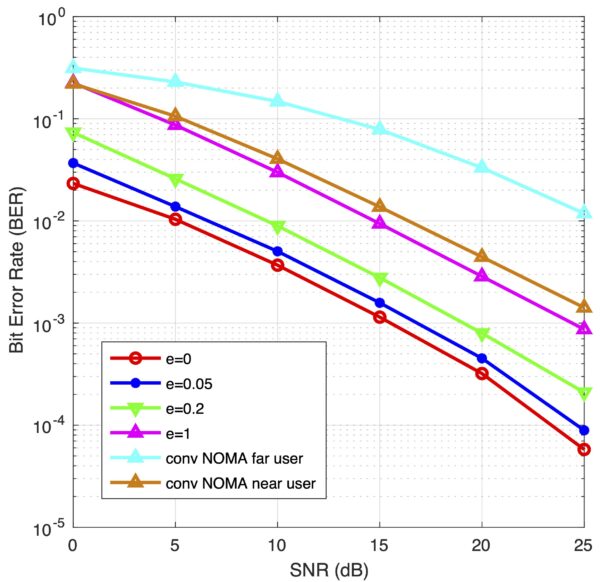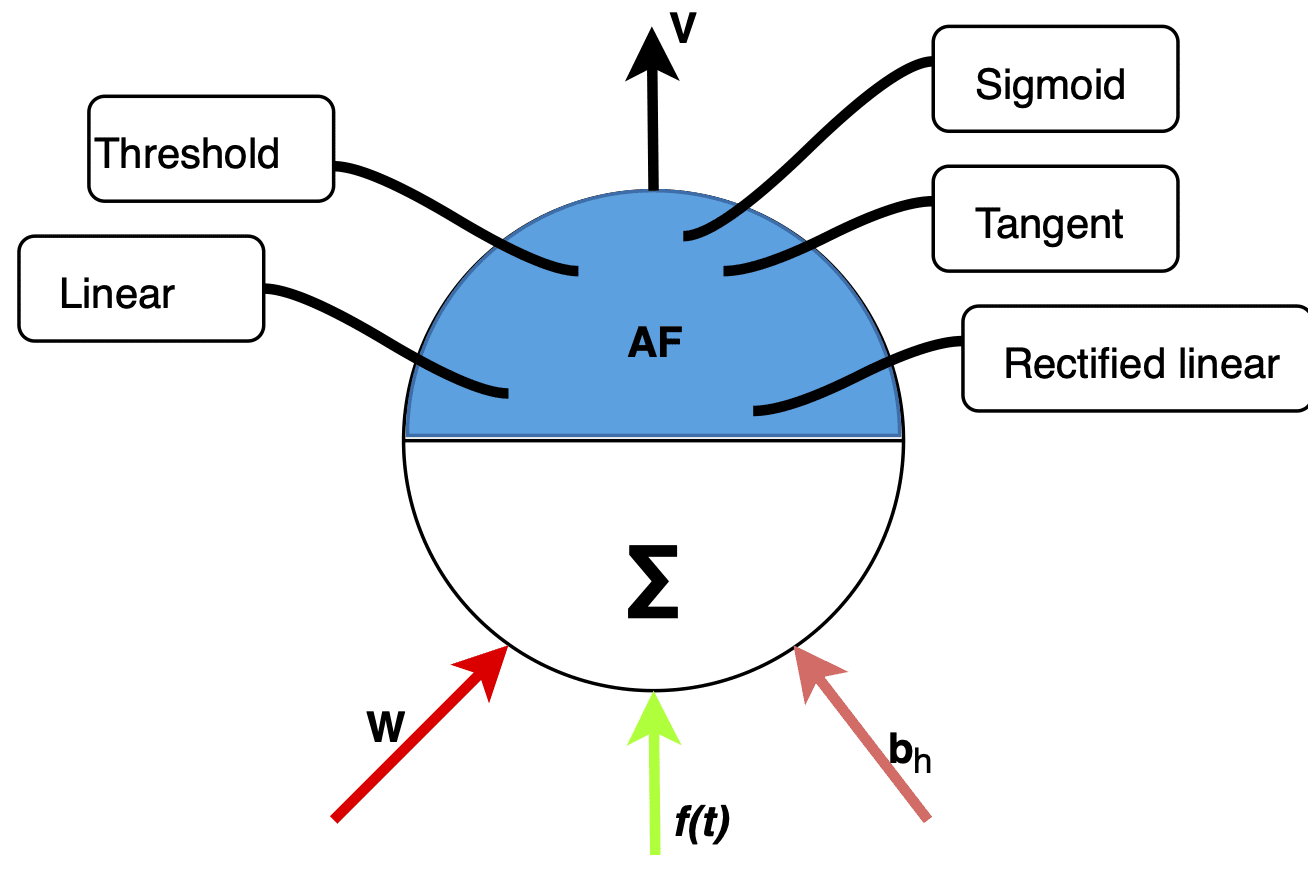Description
Simulation Files and codes for the Novel Energy Harvesting Antenna for Battery-Less IoT Devices
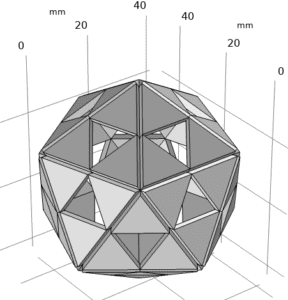
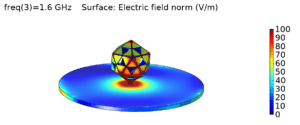
Study title: A Novel Energy Harvesting Antenna for Battery-Less IoT Devices.
Study Summary: Energy harvesting is a process that captures small amounts of energy, radiative radio frequency (RF) that would otherwise be lost as heat, light, sound, or movement. The captured energy allows to improve the efficiency of wireless communications, enables new technologies such as battery-less devices or power internet of things (IoT) devices. This paper presents a novel energy harvesting antenna design; an icosahedron-Sierpiński fractal monopole antenna, the advantage of such a geometry is that it can capture a wide range of frequencies due to its multi-band characteristic and three-dimensional characteristics. The performance of the antenna has been simulated and compared with the already existing research. This antenna geometry has been designed using AUTOCAD2020 and simulated on COMOSOL 5.4 to operate at frequencies between 0.84GHz, 1GHz,1.6 GHz, 2.4GHz, and 3GHz.
Introduction
Nowadays, RF energy is vastly available with the exponential
increase of wireless signals, such as Wi-Fi, radio,
TV and mobile phone signals (5G) which possibly allows
for ambient RF to be harvested to charge low-power electronic
devices wirelessly, previous research has already
demonstrated that capturing these signals provide a solution
to ensure the continuous, long-term operations of IoT
devices at a low cost and power consumption [2-5]. Outdoor
RF energy spectral measurements were carried out
in Shunned; Guangdong, China, and London show that
GSM900 and GSM1800 are the most promising bands for
energy harvesting [3-4].
However, this technique comes at a cost; power is usually
the challenging feature, surveys have shown that power
obtained from energy harvesting, is usually less than a
few mW [7] therefore, EH is used in low power devices.
There are various sources of ambient energy such as solar
energy, wind energy, tidal energy, thermal energy, mechanical
energy, electromagnetic energy, and so on. This
study focuses on electromagnetic energy by capturing RF
waves.
To capture and store RF waves an antenna and rectifier
circuits are needed, previous works have shown monopoles
and dipole microstrip antennas can harvest 5.8 GHz frequencies
and store more than 2.5 volts by using simple
geometries such as rectangular and square [11].
Fractal geometry has become increasingly popular in the
design of antennas, because it leads to antenna miniaturization
and multi-frequency behavior [1,10-12] this is
due to the self-similarity fractal geometry. But it also
presents a challenge since its radiation resistance can be
greater than 50 Ohm [12]. A key feature when designing
antennas is to match its impedance to that of the rectifying
circuit 50 Ohm. Researchers in [10] have come with a
a solution to this by placing embedding a metal plane in a
fractal loop antenna, this not only adjust the impedance
to nearly 50 Ohms, but also makes the antenna more
compact.
Such Geometry has proven to be beneficial in the creation
of antennas, especially for RFID applications due to its
miniature size and its ability to maximize gain resulting
in a greater read range of RFID-based systems. In [12]
two fractal geometries; Koch and Hilbert were proposed
for a 950Mhz RFID system, in this paper the geometry of
the antennas and their gain were compared, showing that
loop geometries are beneficial in the creation of RFID
antennas with a maximum gain of 2.51 dB for a Koch
geometry and 1.74 dB for a butterfly-shaped antenna.
In this paper, COMSOL has been utilized as the primary
software to simulate the antenna, its gain, and its
radiation pattern. In [13] a dipole fractal antenna was
simulated to have a resonance frequency from 860 MHz
to 2.48 GHz, this is useful for RFID systems.
The fractal geometry used in this paper was a Koch Snowflake
and the Return Loss for the antenna was recorded for the first
3 iterations of the antenna. The S-parameters
of the antenna proposed in [13] was exceptional, -39dB
with 1 iteration, -20dB with 2 iterations and -14dB with
3 iterations for frequencies in the range of 860MHz to
2.48 GHz demonstrating the multi-band characteristics
of fractal antennas.
Against this background, this study provides a novel antenna
design, a Sierpinski fractal enclosed in an icosahedron,
and its outlined as follows; geometry (an insight
into fractal geometry and platonic solids), antenna characteristics
antenna design, results, comparisons, and
future work.
